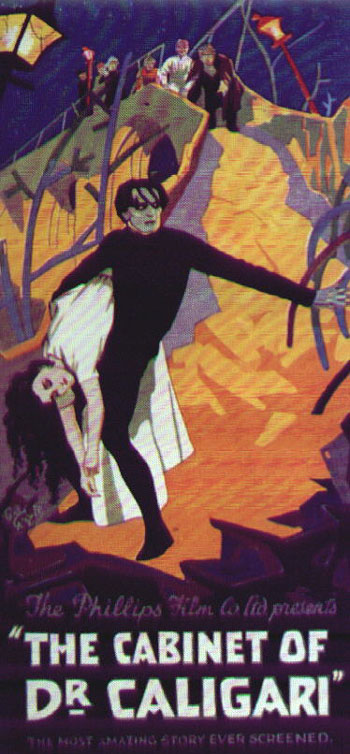 THE CABINET OF DR. CALIGARI
THE CABINET OF DR. CALIGARI
- Rating
- Film Production Credits
-
Release Date: 1919 Produced by: Erich Pommer Directed by: Robert Wiene Other: - Cast of Characters
-
Werner Krauss Dr. Caligari Conrad Veidt Cesare, the Somnambulist Lil Dagover Jane Friedrich Feher Francis - Synopsis and Commentary
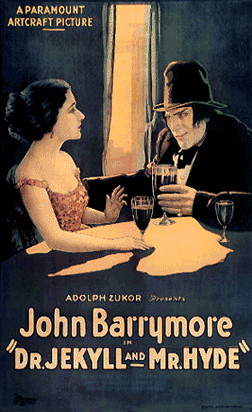 DR. JEKYLL AND MR. HYDE
DR. JEKYLL AND MR. HYDE
- Rating
- Film Production Credits
-
Release Date: 1920 Produced by: Paramount Pictures Directed by: John S. Robertson Other: - Cast of Characters
-
John Barrymore Dr. Henry Jekyll / Mr. Edward Hyde Charles Lane Dr. Richard Lanyon Brandon Hurst Sir George Carew Martha Mansfield Millicent Carew Nita Naldi Gina George Stevens Poole J. Malcolm Dunn Utterson - Synopsis and Commentary
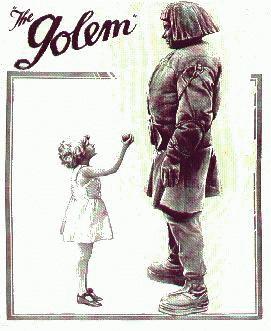 THE GOLEM
THE GOLEM
- Rating
- Film Production Credits
-
Release Date: 1920 Produced by: Directed by: Carl Boese and Paul Wegener Other: Cinematography by Karl Freund,
Co-written by Paul Wegener - Cast of Characters
-
Paul Wegener The Golem Albert Steinrueck Rabbi Loew Lyda Salmonova Miriam Lothar Muethel Knight Florian - Synopsis and Commentary
 NOSFERATU - A Symphony of Horrors
NOSFERATU - A Symphony of Horrors
- Rating
- Film Production Credits
-
Release Date: 1922 Produced by: Prana Directed by: F. W. Murnau Other: - Cast of Characters
-
Max Schreck Count Orlok Greta Schroeder Ellen Hutter Gustav von Wangenheim Thomas Hutter Ruth Landshoff Lucy Westrenka Alexander Granach Broker Knock John Gottowt Prof. Bulwer - Synopsis and Commentary
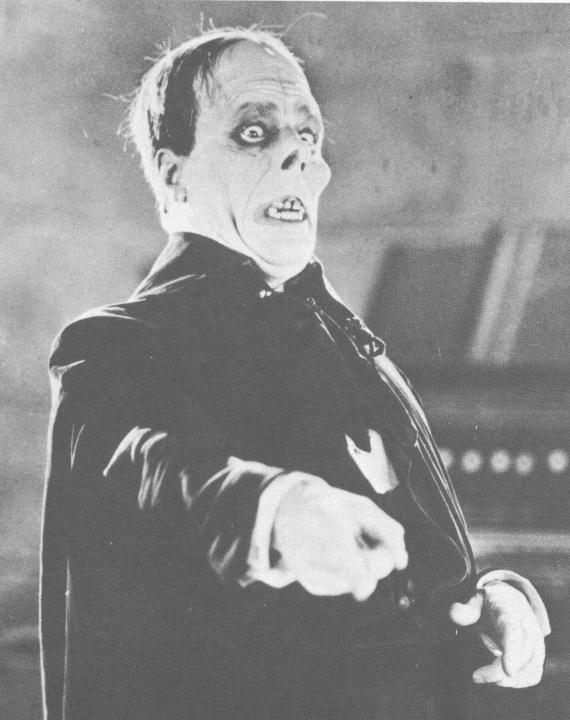 THE PHANTOM OF THE OPERA
THE PHANTOM OF THE OPERA
- Rating
- Film Production Credits
-
Release Date: 1925 Produced by: Universal Pictures (Carl Laemmle) Directed by: Rupert Julian Other: - Images
-
Image 1 Film Poster Image 2 Erik, the Phantom - Cast of Characters
-
Lon Chaney, Sr. Erik, the Phantom Mary Philbin Christine Daae Norman Kerry Viscomte Raoul de Chagny Arthur Edmund Carewe Ledoux, the Persian - Synopsis and Commentary
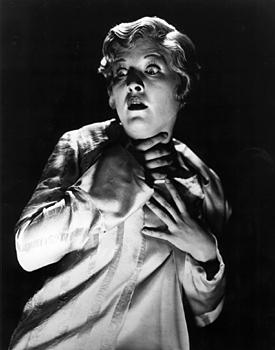 THE CAT AND THE CANARY
THE CAT AND THE CANARY
- Rating
- Film Production Credits
-
Release Date: 1927 Produced by: Universal Pictures (Carl Laemmle) Directed by: Paul Leni Other: - Images
-
Image Film Poster - Cast of Characters
-
Laura LaPlante Annabelle West Creighton Hale Paul Jones Forrest Stanley Charles Wilder Tully Marshall Roger Crosby, the Solicitor Gertrude Astor Cicely Flora Finch Aunt Susan Arthur Edmund Carewe Harry Martha Mattox Mammy Pleasant Lucien Littlefield Dr. Patterson - Synopsis and Commentary
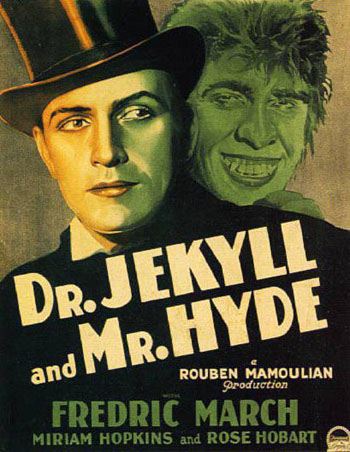 DR. JEKYLL AND MR. HYDE
DR. JEKYLL AND MR. HYDE
- Rating
- Film Production Credits
-
Release Date: 1931 Produced by: Paramount Pictures (Rouben Mamoulian) Directed by: Rouben Mamoulian Other: - Images
-
Image Mr. Hyde and Ivy - Cast of Characters
-
Fredric March Dr. Henry Jekyll / Mr. Edward Hyde Miriam Hopkins Ivy Pearson Rose Hobart Muriel Carew Holmes Herbert Dr. Lanyon Halliwell Hobbes Brigadier General Carew Edgar Norton Poole - Synopsis and Commentary
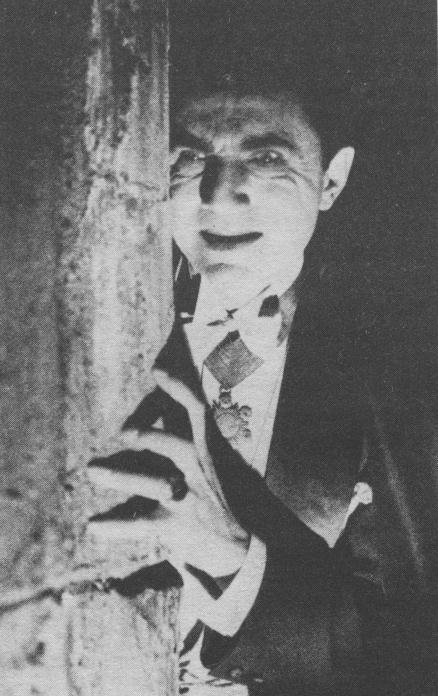 DRACULA
DRACULA
- Rating
- Film Production Credits
-
Release Date: 1931 Produced by: Universal Pictures (Carl Laemmle, Jr) Directed by: Tod Browning Other: Written by John L. Balderston & Hamilton Deane - Images
-
Image 1 Film Poster Image 2 Dracula with Renfield Image 3 In Carfax Abbey Image 4 Film Poster Image 5 Mina and Lucy - Cast of Characters
-
Bela Lugosi Count Dracula Edward Van Sloan Prof. Van Helsing Dwight Frye Renfield Helen Chandler Mina Seward David Manners John Harker - Synopsis and Commentary
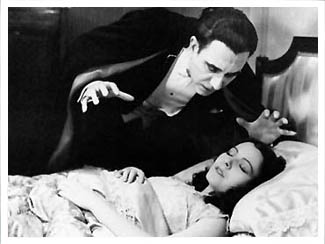 DRACULA (Spanish Version)
DRACULA (Spanish Version)
- Rating
- Film Production Credits
-
Release Date: 1931 Produced by: Universal Pictures (Carl Laemmle, Jr) Directed by: George Melford Other: - Images
-
Image 1 El Conde Dracula Image 2 Renfield - Cast of Characters
-
Carlos Villarias Conde Dracula Lupita Tovar Eva Seward Eduardo Arozamena Dr. Van Helsing Barry Norton Juan Harker Pablo Alvarez Rubio Renfield Jose Soriano Viosca Dr. Seward - Synopsis and Commentary
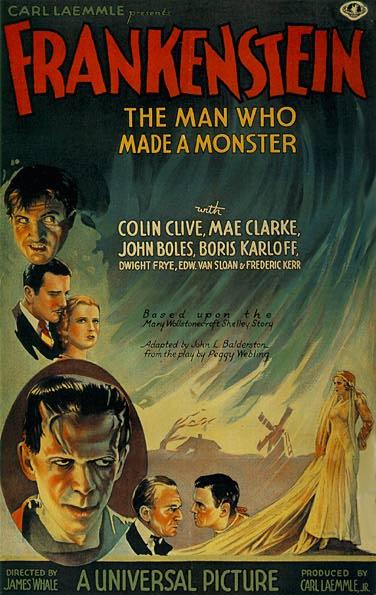 FRANKENSTEIN
FRANKENSTEIN
- Rating
- Film Production Credits
-
Release Date: 1931 Produced by: Universal Pictures (Carl Laemmle, Jr) Directed by: James Whale Other: Makeup by Jack P. Pierce - Images
-
Image 1 Dr. Henry Frankenstein Image 2 Creation Image 3 The Monster Enters Image 4 Close-Up of the Monster Image 5 The Infamous Scene
- Cast of Characters
-
Boris Karloff The Monster Colin Clive Dr. Henry Frankenstein Edward Van Sloan Dr. Waldman Dwight Frye Fritz Mae Clarke Elizabeth John Boles Victor Moritz - Synopsis and Commentary
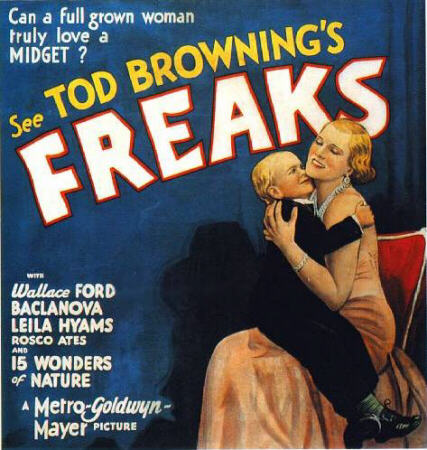 FREAKS
FREAKS
- Rating
- Film Production Credits
-
Release Date: 1932 Produced by: Metro-Goldwyn-Mayer (MGM)
(Tod Browning)Directed by: Tod Browning Other: - Cast of Characters
-
Hans Harry Earles Cleopatra Olga Baclanova Frieda Daisy Earles Hercules Victor Henry Phroso Wallace Ford Venus Leila Hyams - Synopsis and Commentary
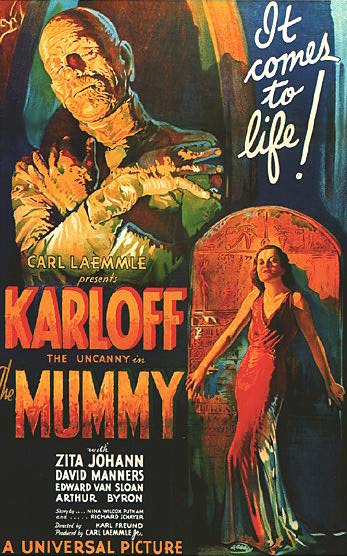 THE MUMMY
THE MUMMY
- Rating
- Film Production Credits
-
Release Date: 1932 Produced by: Universal Pictures, Inc. (Carl Laemmle, Jr) Directed by: Karl Freund Other: Written by John L. Balderston,
Makeup by Jack P. Pierce - Images
-
Image 1 The Mummy Image 2 Ardath Bey Image 2 Film Poster - Cast of Characters
-
Boris Karloff Im-Ho-Tep / Ardath Bey Edward Van Sloan Dr. Muller Zita Johann Helen Grosvenor David Manners Frank Whemple Arthur S. Byron Sir Joseph Whemple Noble Johnson The Nubian - Synopsis and Commentary
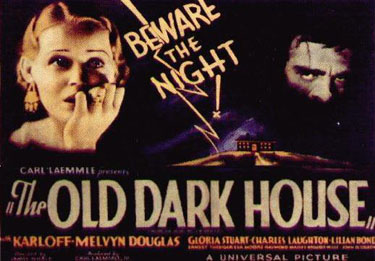 THE OLD DARK HOUSE
THE OLD DARK HOUSE
- Rating
- Film Production Credits
-
Release Date: 1932 Produced by: Universal Pictures
(Carl Laemmle, Jr)Directed by: James Whale Other: Makeup by Jack P. Pierce - Cast of Characters
-
Boris Karloff Morgan, the Butler Ernest Thesiger Horace Femm Melvyn Douglas Roger Penderel Charles Laughton Sir William Porterhouse Raymond Massey Philip Waverton Gloria Stuart Margaret Waverton Lilian Bond Gladys DuCane Eva Moore Rebecca Femm - Synopsis and Commentary
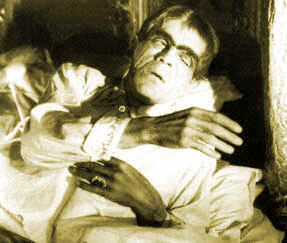 THE GHOUL
THE GHOUL
- Rating
- Film Production Credits
-
Release Date: 1933 Produced by: Gaumont British Picture Corp., Ltd. (Michael Balcon) Directed by: T. Hayes Hunter Other: Based on the novel and play by Dr. Frank King - Cast of Characters
-
Boris Karloff Prof. Morlant Sir Cedric Hardwicke Broughton Ernest Thesiger Laing Sir Ralph Richardson Nigel Hartley Dorothy Hyson Betty Harlon Anthony Bushell Ralph Morlant Harold Huth Aga Ben Dragore - Synopsis and Commentary
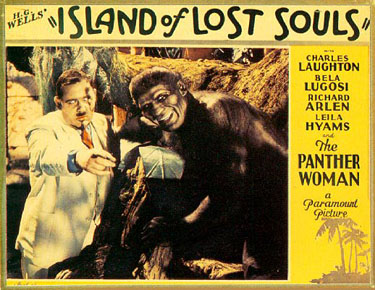 ISLAND OF LOST SOULS
ISLAND OF LOST SOULS
- Rating
- Film Production Credits
-
Release Date: 1933 Produced by: Paramount Pictures Directed by: Erle C. Kenton Other: Makeup by Wally Westmore - Cast of Characters
-
Charles Laughton Dr. Moreau Bela Lugosi Sayer of the Law Richard Arlen Edward Parker Leila Hyams Ruth Thomas Kathleen Burke Lota the Panther Woman - Synopsis and Commentary
 THE MYSTERY OF THE WAX MUSEUM
THE MYSTERY OF THE WAX MUSEUM
- Rating
- Film Production Credits
-
Release Date: 1933 Produced by: Warner Bros. Directed by: Michael Curtiz Other: Adapted from the play by Charles Belden - Cast of Characters
-
Lionel Atwill Ivan Igor Fay Wray Charlotte Duncan Glenda Farrell Florence Dempsey Frank McHugh Jim Allen Vincent Ralph Burton Edwin Maxwell Joe Worth Arthur Edmund Carewe "Professor Darcy" - Synopsis and Commentary
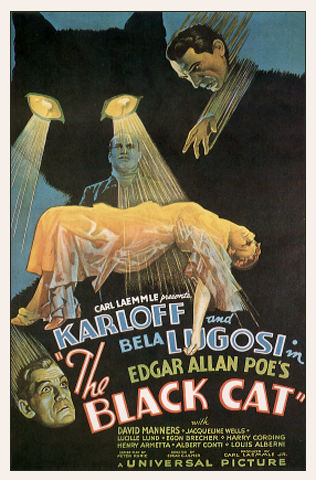 THE BLACK CAT
THE BLACK CAT
- Rating
- Film Production Credits
-
Release Date: 1934 Produced by: Universal Pictures, Inc. (Carl Laemmle, Jr) Directed by: Edgar G. Ulmer Other: Makeup by Jack P. Pierce - Images
-
Image 1 Karloff & Lugosi Publicity Shot Image 2 The Antogonists - Cast of Characters
-
Boris Karloff Hjalmar Poelzig Bela Lugosi Vitus Werdegast David Manners Peter Alison Julie Bishop Joan Alison - Synopsis and Commentary
 THE BRIDE OF FRANKENSTEIN
THE BRIDE OF FRANKENSTEIN
- Rating
- Film Production Credits
-
Release Date: 1935 Produced by: Universal Pictures (Carl Laemmle, Jr) Directed by: James Whale Other: Makeup by Jack P. Pierce - Images
-
Image 1 The Monster Takes Her Arm Image 2 The Monster's Face Image 3 Film Poster Image 4 Mary Wollstonecraft Shelley - Cast of Characters
-
Boris Karloff The Monster Elsa Lanchester The Bride of Frankenstein Colin Clive Dr. Henry Frankenstein Ernest Thesiger Dr. Praetorius - Synopsis and Commentary
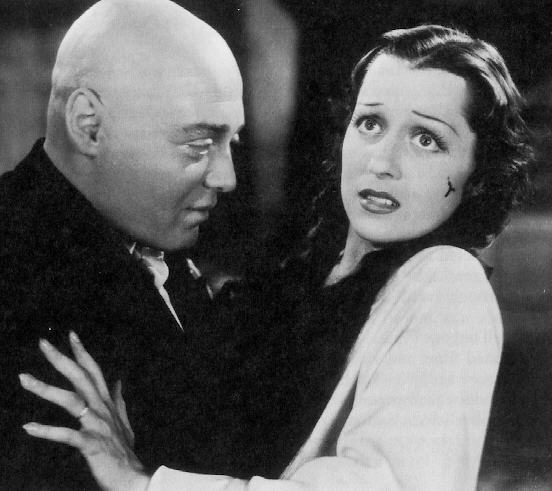 MAD LOVE
MAD LOVE (aka THE HANDS OF ORLAC)
- Rating
- Film Production Credits
-
Release Date: 1935 Produced by: Metro-Goldwyn-Mayer (MGM), Inc. Directed by: Karl Freund Other: Written by John L. Balderston, et. al.,
Music by Dmitri Tiomkin - Cast of Characters
-
Peter Lorre Dr. Gogol Colin Clive Stephen Orlac Frances Drake Yvonne Orlac Keye Luke Dr. Wong - Synopsis and Commentary
 THE RAVEN
THE RAVEN
- Rating
- Film Production Credits
-
Release Date: 1935 Produced by: Universal Pictures Directed by: Lew Landers Other: Makeup by Jack P. Pierce - Images
-
Image 1 Karloff & Lugosi Publicity Shot Image 2 Vollin's Pit and the Pendulum - Cast of Characters
-
Bela Lugosi Dr. Richard Vollin Boris Karloff Edmond Bateman Irene Ware Jean Thatcher Samuel S. Hinds Judge Thatcher - Synopsis and Commentary
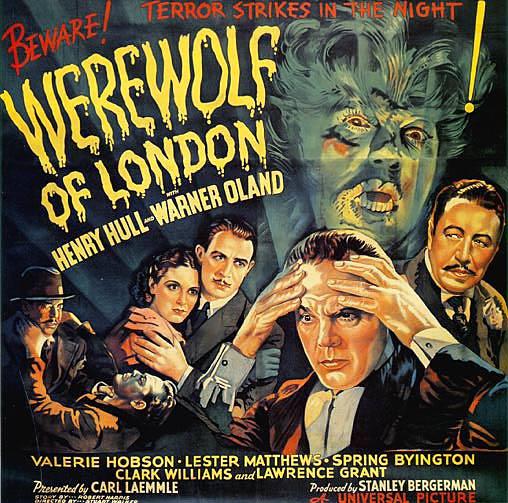 THE WEREWOLF OF LONDON
THE WEREWOLF OF LONDON
- Rating
- Film Production Credits
-
Release Date: 1935 Produced by: Universal Pictures Directed by: Stuart Walker Other: Makeup by Jack P. Pierce - Cast of Characters
-
Henry Hull Dr. Wilfred Glendon Warner Oland Dr. Yogami Valerie Hobson Lisa Glendon Lester Matthews Paul Ames Lawrence Grant Sir Thomas Forsythe Spring Byington Miss Ettie Coombes - Synopsis and Commentary
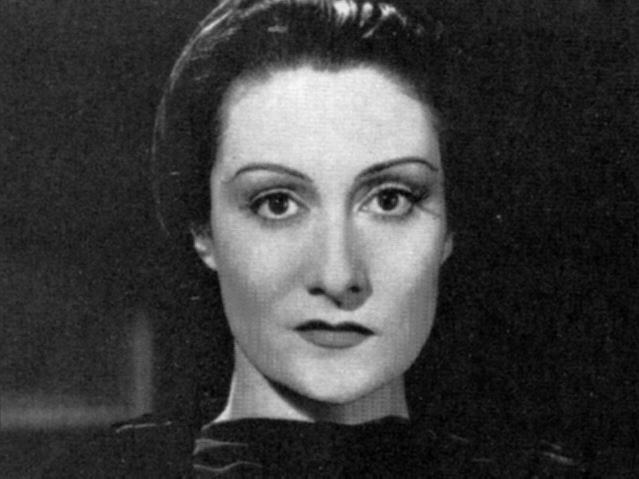 DRACULA'S DAUGHTER
DRACULA'S DAUGHTER
- Rating
- Film Production Credits
-
Release Date: 1936 Produced by: Universal Pictures Directed by: Lambert Hillyer Other: - Images
-
Image 1 Film Poster Image 2 The Countess and the Physician Image 3 The Countess and Her Victim - Cast of Characters
-
Gloria Holden Countess Marya Zaleska Otto Krueger Dr. Jeffery Garth Edward Van Sloan Professor Van Helsing Marguerite Churchill Janet Blake Irving Pichel Sandor - Synopsis and Commentary
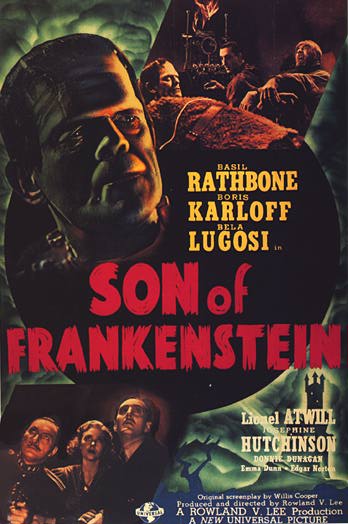 SON OF FRANKENSTEIN
SON OF FRANKENSTEIN
- Rating
- Film Production Credits
-
Release Date: 1939 Produced by: Universal Studios Directed by: Rowland V. Lee Other: Makeup by Jack P. Pierce - Cast of Characters
-
Basil Rathbone Baron Wolf von Frankenstein Boris Karloff The Monster Bela Lugosi Ygor the shepherd Lionel Atwill Inspector Krogh Josephine Hutchinson Elsa von Frankenstein Dwight Frye Villager Ward Bond Gendarme - Synopsis and Commentary
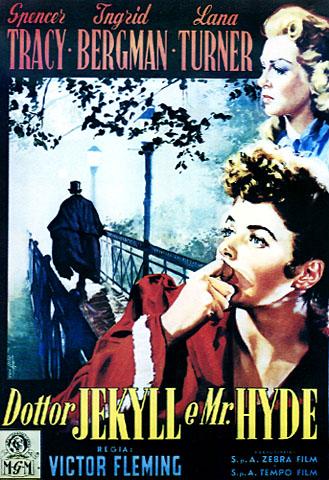 DR. JEKYLL AND MR. HYDE
DR. JEKYLL AND MR. HYDE
- Rating
- Film Production Credits
-
Release Date: 1941 Produced by: Metro-Goldwyn-Mayer (MGM) Directed by: Victor Fleming Other: Music by Franz Waxman, et. al. - Cast of Characters
-
Spencer Tracy Dr. Henry Jekyll / Edward Hyde Ingrid Bergman Ivy Peterson Lana Turner Beatrix Emery Donald Crisp Sir Charles Emery Barton MacLane Sam Higgins - Synopsis and Commentary
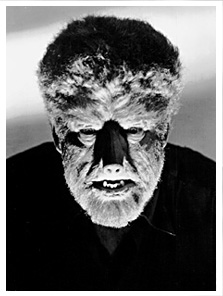 THE WOLF MAN
THE WOLF MAN
- Rating
- Film Production Credits
-
Release Date: 1941 Produced by: Universal Pictures Directed by: George Waggner Other: Makeup by Jack P. Pierce;
Screenplay by Curt Siodmak - Images
-
Image 1 Film Poster Image 2 The Final Confrontation Image 3 The Gypsy Fortune-Teller - Cast of Characters
-
Lon Chaney, Jr. Lawrence Talbot Claude Rains Sir John Talbot Evelyn Ankers Gwen Conliffe Bela Lugosi Bela, the Gypsy Ralph Bellamy Col. Montford Maria Ouspenskaya Maleva, the Gypsy - Synopsis and Commentary
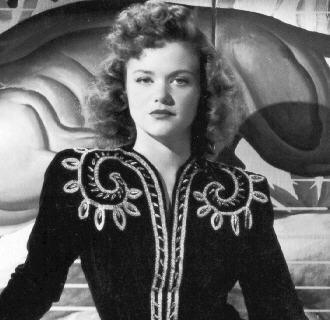 THE CAT PEOPLE
THE CAT PEOPLE
- Rating
- Film Production Credits
-
Release Date: 1942 Produced by: RKO Radio Pictures, Inc. (Val Lewton) Directed by: Jacques Tourneur Other: Story by DeWitt Bodeen - Images
-
Image 1 Film Poster Image 2 Film Poster - Cast of Characters
-
Simone Simon Irena Dubrovna Kent Smith Oliver Reed Tom Conway Dr. Louis Judd Jane Randolph Alice Moore Elizabeth Russell The Cat Woman - Synopsis and Commentary
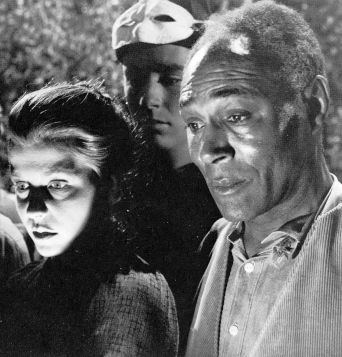 FLESH AND FANTASY
FLESH AND FANTASY
- Rating
- Film Production Credits
-
Release Date: 1943 Produced by: Universal Pictures Directed by: Julien Duvivier Other: - Cast of Characters
-
Edward G. Robinson Marshall Tyler Charles Boyer Paul Gaspar Barbara Stanwyck Joan Stanley Robert Cummings Michael Betty Field Henrietta Thomas Mitchell Septimus Podgers - Synopsis and Commentary
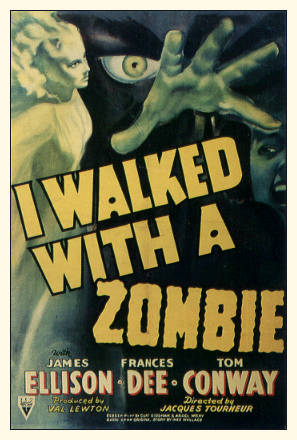 I WALKED WITH A ZOMBIE
I WALKED WITH A ZOMBIE
- Rating
- Film Production Credits
-
Release Date: 1943 Produced by: Val Lewton Directed by: Jacques Tourneur Other: Written by Curt Siodmak - Cast of Characters
-
Frances Dee Betsy Connell Tom Conway Paul Holland Edith Barrett Mrs. Holland Christine Gordon Jessica Holland James Ellison Wesley Rand Martin Wilkins Houngan - Synopsis and Commentary
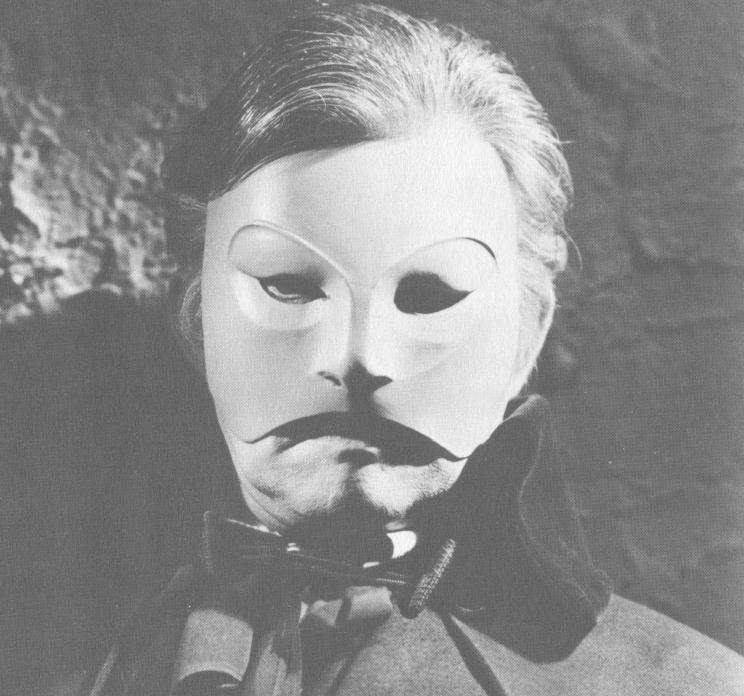 THE PHANTOM OF THE OPERA
THE PHANTOM OF THE OPERA
- Rating
- Film Production Credits
-
Release Date: 1943 Produced by: Universal Studios Directed by: Arthur Lubin Other: - Images
-
Image 1 Film Poster Image 2 Sabotage of the Great Chandelier - Cast of Characters
-
Claude Rains Enrique Claudin, The Phantom Nelson Eddy Anatole Garron Susanna Foster Christina Dubois Edgar Barrier Raoul D'Aubert - Synopsis and Commentary
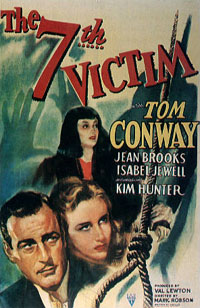 THE SEVENTH VICTIM
THE SEVENTH VICTIM
- Rating
- Film Production Credits
-
Release Date: 1943 Produced by: RKO Radio Pictures (Val Lewton) Directed by: Mark Robson Other: Written by DeWitt Bodeen & Charles O'Neal - Cast of Characters
-
Kim Hunter Mary Gibson Jean Brooks Jacqueline Gibson Hugh Beaumont Gregory Ward Tom Conway Dr. Louis Judd Isabel Jewell Frances Fallon Ben Bard Mr. Brun - Synopsis and Commentary
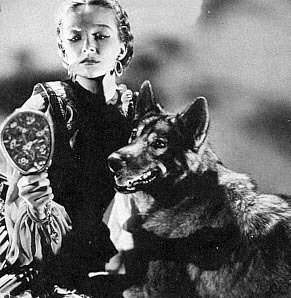 THE CRY OF THE WEREWOLF
THE CRY OF THE WEREWOLF
- Rating
- Film Production Credits
-
Release Date: 1944 Produced by: Columbia Pictures Directed by: Henry Levin Other: - Cast of Characters
-
Nina Foch Princess Celeste LaTour Stephen Crane Bob Morris Barton MacLane Lt. Barry Lane Osa Massen Elsa Chauvet - Synopsis and Commentary
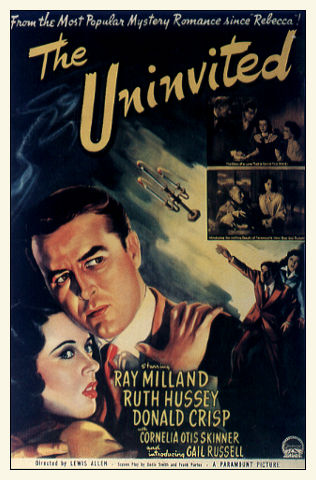 THE UNINVITED
THE UNINVITED
- Rating
- Film Production Credits
-
Release Date: 1944 Produced by: Paramount Pictures Directed by: Lewis Allen Other: - Cast of Characters
-
Ray Milland Roderick Fitzgerald Ruth Hussey Pamela Fitzgerald Gail Russell Stella Meredith Donald Crisp Cmdr Beech Cornelia Otis Skinner Miss Holloway Alan Napier Dr. Scott - Synopsis and Commentary
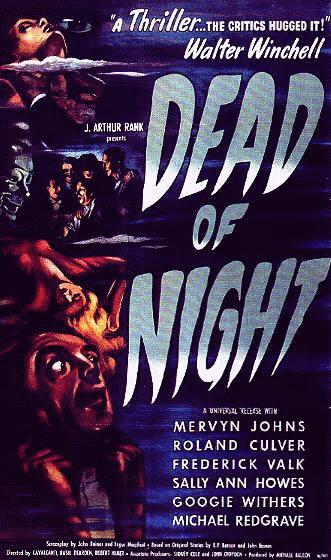 DEAD OF NIGHT
DEAD OF NIGHT
- Rating
- Film Production Credits
-
Release Date: 1945 Produced by: Ealing Studios Directed by: Alberto Cavalcanti, Charles Crichton,
Basil Dearden, Robert HamerOther: - Images
-
Image The Ventriloquist - Cast of Characters
-
Michael Redgrave Maxwell Frere Mervyn Johns Walter Craig Roland Culver Eliot Foley Sally Ann Howes Sally O'Hara Frederick Valk Dr. Van Straaten - Synopsis and Commentary
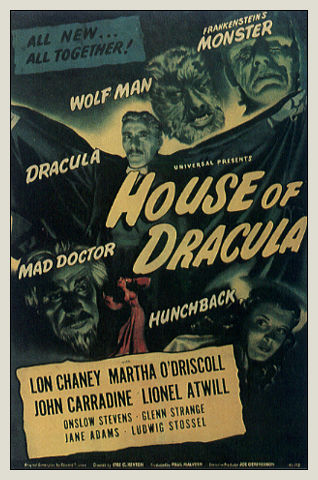 HOUSE OF DRACULA
HOUSE OF DRACULA
- Rating
- Film Production Credits
-
Release Date: 1945 Produced by: Universal Pictures Directed by: Erle C. Kenton Other: Makeup by Jack P. Pierce - Cast of Characters
-
John Carradine Count Dracula Lon Chaney, Jr. Lawrence Talbot (The Wolfman) Onslow Stevens Dr. Edelman (The Mad Scientist) Glenn Strange The Frankenstein Monster Jane Adams Nina Lionel Atwill Inspector Holtz Martha O'Driscoll Miliza Morelle - Synopsis and Commentary
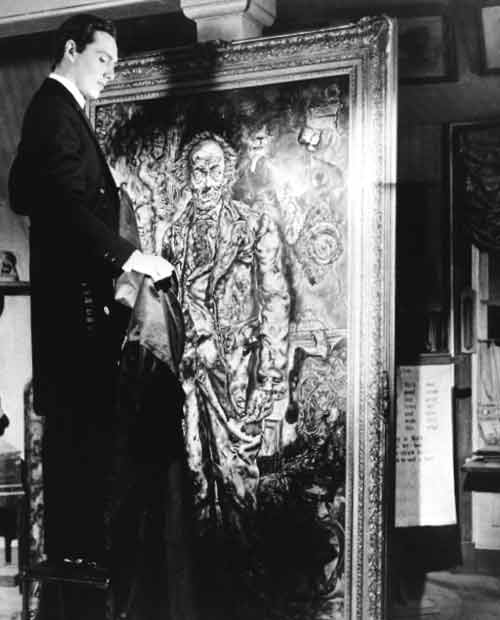 THE PICTURE OF DORIAN GRAY
THE PICTURE OF DORIAN GRAY
- Rating
- Film Production Credits
-
Release Date: 1945 Produced by: Metro-Goldwyn-Mayer (MGM), Inc. Directed by: Albert Lewin Other: Written by Albert Lewin, Paintings by Henrique Medina
and Ivan Le Lorraine Albright - Cast of Characters
-
Hurd Hatfield Dorian Gray George Sanders Lord Henry Wotton Lowell Gilmore Basil Hallward Donna Reed Gladys Hallward Angela Lansbury Sybil Vane Peter Lawford David Stone - Synopsis and Commentary
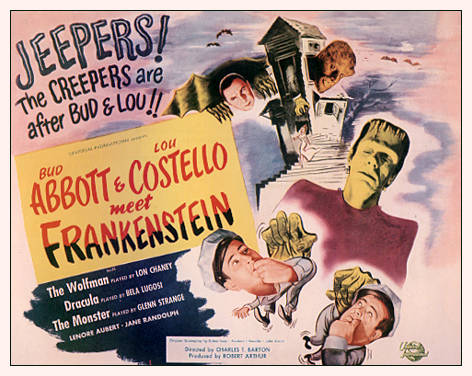 ABBOTT AND COSTELLO MEET FRANKENSTEIN
ABBOTT AND COSTELLO MEET FRANKENSTEIN
- Rating
- Film Production Credits
-
Release Date: 1948 Produced by: Universal International Pictures Directed by: Charles Barton Other: - Cast of Characters
-
Bud Abbott Chick Young Lou Costello Wilbur Grey Bela Lugosi Count Dracula Lon Chaney, Jr. Lawrence Talbot (The Wolfman) Glenn Strange The Frankenstein Monster Lenore Aubert Dr. Sandra Mornay Jane Randolph Joan Raymond - Synopsis and Commentary
-
The Best Horror Films: Main Index
- A complete linked alphabetical index of all the films on this site, plus links to other sites.
The Classic Horror Films (1953 - 1973)
- The post-war renaissance of horror, with the emerging masters of British horror cinema, Peter Cushing and Christopher Lee, and the new American icon, Vincent Price. From House of Wax to Frankenstein - the True Story.
The Modern Horror Film (1968 - 1998)
- From the passing of gothic cinema, through the modern evolution of contemporary horror to the reemergent Neo-Gothic of the 1990s. From Romero's Night of the Living Dead to Stephen King's The Shining.
The New Millenium (1999 - ?)
- From the resurgence of interest in remaking the classics to a new renaissance of independent films. From The Blair Witch Project onwards.
- A complete linked alphabetical index of all the films on this site, plus links to other sites.